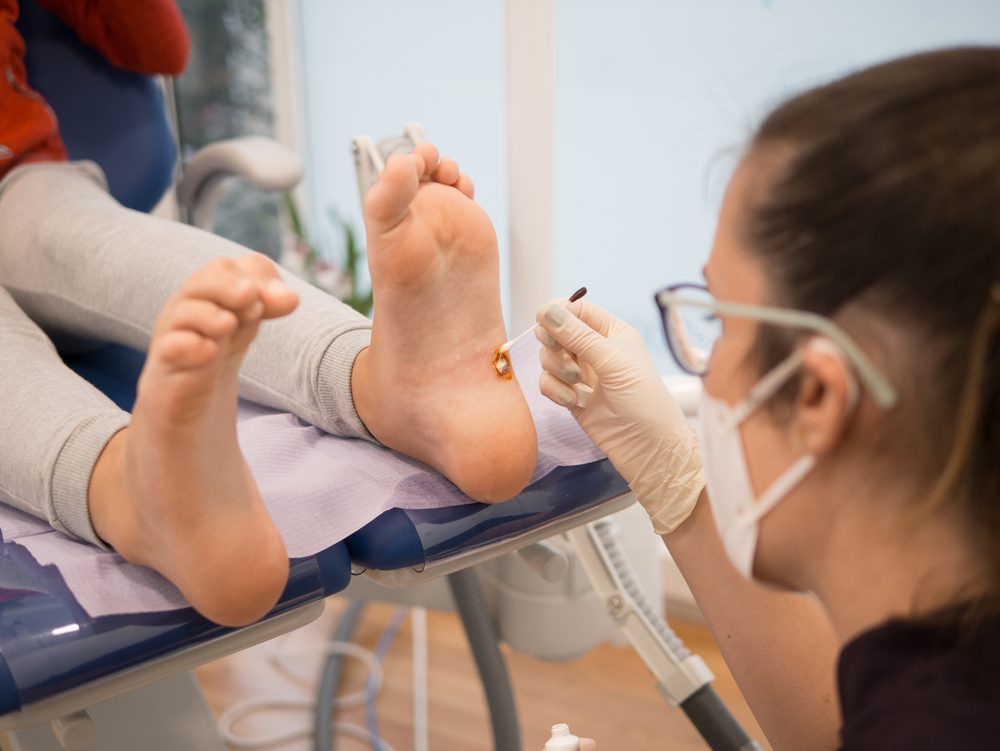Warts are small, noncancerous growths that appear on the skin. Caused by the human papillomavirus, or HPV, these growths can develop anywhere on the body. While many are harmless, their appearance may be a source of discomfort. Understanding the different types of warts and the available treatments can help you manage them effectively. This guide provides a clear overview for podiatry professionals.
Which Types of Warts Exist?
Different strains of HPV cause various types of warts, which are classified by their location on the body and appearance. As a podiatrist, you are likely familiar with these common growths, but a review of their characteristics is helpful. Recognizing each type is the first step toward determining a course of action for your patients.
There are several main types of warts. Each has distinct features that help in its identification.
- Common warts: These often appear on the hands and fingers. They are rough, grainy, and have a rounded top. They may contain small black dots, which are clotted blood vessels.
- Flat warts: These are smoother, flatter, and smaller than other warts. They can appear in large numbers, often on the face, arms, or thighs.
- Filiform warts: These have a thread-like or finger-like shape. They tend to grow quickly and often appear on the face, around the mouth, eyes, or nose.
- Periungual warts: These grow under and around the toenails and fingernails. They can affect nail growth and may be painful.
Familiarity with these types allows for precise identification in a clinical setting. This knowledge enables effective communication with patients about their specific condition and what they can expect. Proper diagnosis guides the subsequent treatment strategy.
How Do Plantar Warts Differ From Others?
Plantar warts are a specific type of wart that develops on the soles of the feet. Their location is what primarily distinguishes them from other types. The pressure from walking and standing may cause them to grow inward beneath a thick, tough layer of skin. This inward growth is a key difference from warts on other parts of the body.
This unique positioning on the foot’s sole can lead to discomfort or pain, especially when walking. A plantar wart may feel like having a stone in your shoe. They may appear as single growths or in clusters, known as mosaic warts. Like others, they may have small black dots on their surface.
Because they are on weight-bearing areas, plantar warts can become calloused. This sometimes makes them difficult to distinguish from calluses. A podiatrist can properly identify a plantar wart and differentiate it from other foot conditions, a necessary step before initiating any treatment plan.
Which Treatments Work Best?
Several treatment options are available for warts, and their effectiveness can vary depending on the type and location of the wart. For podiatry specialists, managing plantar warts often involves specific approaches tailored to the foot. The goal is to remove the wart without causing significant scarring or discomfort.
Selecting a treatment depends on the patient’s health, the number and location of warts. Some common professional treatments include:
- Salicylic acid: This is a common peeling agent. When applied regularly, it removes layers of the wart over time. Higher concentrations are available for professional use.
- Cryotherapy: This method involves applying liquid nitrogen to the wart. The freezing temperature destroys the wart tissue. Multiple sessions may be needed.
- Cantharidin: A substance is applied to the wart, causing a blister to form underneath it. The podiatrist will then clip away the dead part of the wart.
- Minor surgery: This involves cutting away the wart or destroying it using an electric needle in a process called electrodesiccation and curettage.
The choice of treatment is a collaborative decision between the podiatrist and the patient. Discussing the benefits and potential side effects of each option allows for an informed choice. The patient’s lifestyle and pain tolerance are also factors in this decision.
Consult a Podiatrist
While some warts may resolve on their own, many require professional attention, especially those on the feet. A podiatrist can provide an accurate diagnosis and recommend a suitable treatment plan for plantar warts. Attempting to remove warts at home, particularly on the feet, may lead to complications. Consulting a specialist provides a safe and effective path for managing these common growths. Contact a podiatry office to schedule a consultation and discuss your treatment options.



